Meeting Brexit-Ready Pallet Change Compliance Requirements in United Kingdom with Automated Pallet Exchange
Are you shipping goods between the United Kingdom and the European Union? If so, you have likely encountered the new, strict rules for wooden pallets. Since Brexit, these regulations have become a major hurdle for many businesses. Ignoring them can lead to your shipments being rejected at the border, causing costly delays, fines, and serious damage to your customer relationships. The traditional solution of manually swapping goods from one pallet to another is slow, unsafe for your team, and often results in damaged products. This manual process creates a bottleneck right when you need your operations to be at their most efficient.
The most effective way to meet Brexit-ready pallet change compliance requirements in the United Kingdom is by implementing an automated pallet exchange system. These machines safely and rapidly transfer your entire product load from a non-compliant internal pallet to a fully compliant, ISPM 15 heat-treated pallet. This ensures every shipment meets the strict UK-EU regulations without manual handling, product damage, or operational delays, turning a logistical challenge into a competitive advantage.
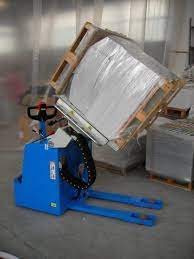
As an engineer who has spent his entire career in the packaging industry, I have seen firsthand how a small change in regulations can have a huge impact on a company's entire operation. This pallet issue is a perfect example. But I have also seen how smart investments in technology can solve these problems and make a business stronger. In this article, I will walk you through everything you need to know. We will look at why these rules exist, how automation solves the problem, and how you can choose the right solution for your factory.
Why are ISPM 15 heat-treated pallets now mandatory for UK-EU trade?
You may be wondering why pallets, a simple part of shipping, have suddenly become so complicated. For years, moving goods between the UK and EU was seamless, but now you face the risk of entire shipments being turned away because of the wood they are stacked on. If you fail to use the correct ISPM 15 compliant pallets, you are not just risking delays. You could face fines, be forced to pay for the destruction of your goods, and damage the trust you have built with your European partners. This single compliance issue can disrupt your entire supply chain.
ISPM 15 heat-treated pallets are now mandatory for trade between the United Kingdom and the European Union to prevent the spread of pests and diseases that can live in untreated wood. Before Brexit, the UK was part of the EU's single market, so these international plant health rules did not apply. Now, the UK is treated as a "third country," which means all wood packaging material, including pallets, must meet the global ISPM 15 standard to cross the border into the EU.
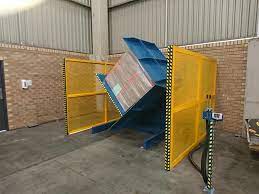
Understanding the Core Regulation: ISPM 15
ISPM 15, or International Standard for Phytosanitary Measures No. 15, is a global standard developed to stop the spread of harmful organisms in wood materials used in international trade. The main goal is to protect forests and ecosystems around the world from invasive species. These pests, like the Asian long-horned beetle or the pine wood nematode, can hide deep inside untreated wood and cause devastating damage to local agriculture and forestry if they are introduced to a new environment. Before this standard was created, this happened quite often.
The regulation requires that all wood packaging material (WPM), which includes pallets, crates, and dunnage, be treated to kill any pests. There are two approved methods:
- Heat Treatment (HT): The wood must be heated until its core reaches a minimum temperature of 56°C (133°F) for at least 30 continuous minutes. This is the most common method.
- Methyl Bromide (MB) Fumigation: The wood is fumigated with this chemical. However, due to environmental concerns, its use is becoming less common.
Once treated, the pallet is stamped with an official mark that shows it is compliant. This mark includes the IPPC (International Plant Protection Convention) symbol, the country code, a unique producer code, and the treatment code (HT or MB). When customs officials in the EU see this stamp on a pallet arriving from the UK, they know it is safe to allow into the country. Without this stamp, the pallet is considered a biological risk.
The Consequences of Non-Compliance
The risks of ignoring these rules are significant and can be very expensive. A business owner like Javier Morales, who I know thinks carefully about every risk, would immediately see the potential impact on his operations. If your shipment arrives at an EU port on a non-compliant pallet, several things can happen, none of them good.
| Consequence | Description | Impact on Your Business |
|---|---|---|
| Rejection at Border | The entire shipment can be refused entry into the EU. | Immediate loss of sale, angry customer, urgent return shipping costs. |
| Forced Repackaging | Authorities may require you to transfer your goods to a compliant pallet on-site, often at a high cost using third-party labor. | Unexpected labor and material costs, significant delays. |
| Destruction of Goods | In the worst-case scenario, if the load is deemed a high risk, the entire shipment, including your products and the pallet, can be destroyed. | Total loss of product and revenue, severe reputational damage. |
| Fines and Penalties | Government agencies can levy substantial fines for repeatedly failing to comply with import regulations. | Direct financial loss, increased scrutiny on future shipments. |
For a steel mill or any large-scale manufacturing operation, consistency and predictability are everything. These potential disruptions are not just inconvenient; they threaten the financial stability and reputation of the business. This is why ensuring 100% compliance is not just a good idea—it is a business necessity in the post-Brexit world.
How can an automated pallet exchanger streamline compliance and boost efficiency?
You know you need to switch to compliant pallets, but how do you do it? The obvious answer is to have your workers do it manually. But this creates a new set of problems. It is incredibly slow, tying up your staff and creating a major bottleneck at your loading docks. It is also dangerous. Lifting heavy, awkward loads repeatedly leads to back injuries and workplace accidents, which drives up insurance costs and hurts team morale. On top of that, every time a product is handled manually, there is a risk of it being dropped or damaged. This inefficiency is a hidden cost that eats away at your profits.
An automated pallet exchanger streamlines compliance by replacing the slow, unsafe manual process with a fast, secure, and fully mechanical one. The machine takes the entire load on its original pallet, safely tilts or pushes the goods, removes the old pallet, and inserts the new, compliant ISPM 15 pallet. This entire cycle is often completed in less than 60 seconds. It eliminates the need for manual handling, drastically reduces the risk of product damage, and allows your dispatch process to flow continuously, boosting overall operational efficiency.
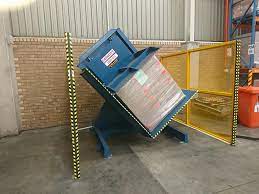
From Manual Chaos to Automated Control
I remember visiting a client's food processing plant a few years ago. They were facing this exact challenge. To ship to a new international customer, they had to switch from their internal plastic pallets to wooden export pallets. Their "solution" was to have two workers stop their regular jobs and spend hours manually unstacking and restacking boxes. The process was slow, products were occasionally dropped, and the workers were clearly unhappy and at risk. It was a perfect example of a manual process creating more problems than it solved.
This is where automation changes the game. Let's break down the practical differences.
The Workflow Transformation
-
The Old Manual Way: A forklift brings a pallet to a staging area. Two or more employees begin to take the products off the pallet, one by one or layer by layer, and place them on the new, compliant pallet nearby. This requires physical strength, careful coordination, and a lot of time. The risk of error, injury, or damage is high with every single movement. For a load of 50 boxes, that is 50 opportunities for something to go wrong.
-
The New Automated Way: A forklift operator places the entire palletized load into the pallet exchanger. The operator presses a button. The machine's pressure-sensitive clamping walls secure the load. Depending on the model, it might tilt the load 90 or 180 degrees, or a pusher plate will slide the load smoothly onto the new pallet waiting on the other side. The old pallet is ejected, and the forklift picks up the newly palletized, compliant load. The process is complete.
This isn't just a minor improvement; it's a fundamental shift in how work gets done. It addresses several of the key challenges that factory owners like Javier are constantly battling: labor costs, operational efficiency, and workplace safety.
A Head-to-Head Comparison
To make it even clearer, let's compare the two methods across the metrics that matter most to any operations manager or business owner.
| Metric | Manual Pallet Swapping | Automated Pallet Exchange |
|---|---|---|
| Time per Pallet | 10 - 20 minutes | < 1 minute |
| Labor Required | 2-3 employees | 1 forklift operator (part-time) |
| Safety Risk | High (lifting injuries, repetitive strain, slips) | Extremely Low (process is fully contained within the machine) |
| Product Damage | Moderate to High (risk of dropping, crushing) | Near Zero (load is held securely throughout the transfer) |
| Throughput | Low (3-6 pallets per hour) | High (40-60 pallets per hour) |
| Process Control | Inconsistent (depends on workers' speed and care) | 100% Consistent and Predictable |
By automating, you are not just buying a machine. You are buying speed, safety, and reliability. You are turning a mandatory compliance step that was once a cost center into a streamlined part of an efficient, modern workflow.
What is the real ROI of investing in a pallet changer for Brexit compliance?
When I talk to fellow factory owners, the first question is always about cost. A new piece of machinery like a pallet changer is a significant capital investment, and it is natural to question if it is worth the price. You might see the initial cost and think it is too high for just solving a "pallet problem." But the mistake is looking at the cost in isolation. The real question is, what is the cost of not investing? When you add up the ongoing expenses of manual labor, the financial impact of damaged products, the potential for huge fines, and the cost of production delays, the picture changes completely.
The real Return on Investment (ROI) of a pallet changer is found by calculating the total savings it generates across labor, product damage, and operational efficiency, then comparing that to its initial cost. Beyond simple compliance, the investment pays for itself by dramatically reducing direct labor costs, eliminating expenses from damaged goods, increasing throughput capacity, and lowering the risk of costly workplace accidents. For most high-volume operations, the payback period is typically between 12 and 24 months.
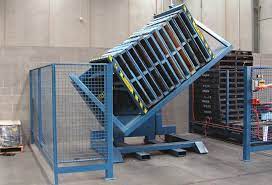
Breaking Down the Financial Case
As someone who had to justify every equipment purchase when building my own factory, I learned to look beyond the price tag and build a solid business case. Let's do that for a pallet exchanger. An owner like Javier, with his background in engineering and business, would appreciate this kind of practical analysis. The ROI comes from several clear, measurable areas.
Quantifiable Savings
-
Direct Labor Savings: This is the easiest to calculate. Let's say it takes two employees 15 minutes (0.25 hours) to swap a pallet. If your fully-loaded labor cost (wages + benefits) is £20 per hour per employee, each swap costs you £10 in labor (£20/hr 2 employees 0.25 hr). If you swap 40 pallets a day, that's £400 per day in just labor. An automated exchanger reduces this cost by over 95%.
- Calculation: (Daily Labor Cost for Manual Swapping) * (Workdays per Year) = Annual Labor Savings.
-
Reduced Product Damage: This is a hidden cost that adds up fast. If you have a 1% damage rate on loads that are manually handled, and the average value of a palletized load is £2,000, you are losing £20 per swap on average. If you swap 40 pallets a day, that is £800 in daily losses. An automated system that secures the load can reduce this damage rate to virtually zero.
- Calculation: (Average Value per Pallet) (Damage Rate %) (Pallets Swapped per Year) = Annual Damage Savings.
-
Increased Throughput: A manual team might swap 4 pallets per hour. An automated system can swap 40 or more. This means your trucks are loaded faster, and you can ship more products each day without paying for overtime. This increased capacity is a direct contributor to revenue.
A Sample ROI Calculation
Let's put this into a simple table to see how quickly the investment can pay for itself. We will use conservative estimates.
| Cost/Saving Category | Assumptions | Annual Financial Impact |
|---|---|---|
| Initial Investment (Cost) | Pallet Exchanger Cost: -£40,000 | -£40,000 (Year 1) |
| Labor Savings | £200/day savings * 250 workdays | +£50,000 |
| Product Damage Reduction | £150/day savings * 250 workdays | +£37,500 |
| Reduced Accident/Insurance Costs | Estimated annual savings | +£5,000 |
| Total Annual Savings | Sum of all savings | +£92,500 |
| Net ROI (Year 1) | Total Savings - Initial Investment | +£52,500 |
In this realistic scenario, the machine pays for itself completely and generates an additional profit of over £52,000 in the very first year. For a CEO like Javier, who has a goal to lower overall operating costs by 8%, an investment like this is not an expense—it is a direct path to achieving that strategic objective. The financial case is clear and compelling.
How do you choose the right pallet exchange solution for your specific needs?
You are convinced that automation is the right path. But when you start looking, you see many different types of machines: pallet inverters, pallet changers, pushers, tippers. It can be confusing. Choosing the wrong machine is a costly mistake. You could end up with a solution that is too slow for your needs, cannot handle your specific products safely, or simply does not fit into your factory's layout. This is a decision that requires careful thought.
Choosing the right pallet exchange solution requires a detailed analysis of four key factors: your product characteristics (what you are handling), your throughput requirements (how fast you need to go), your physical space and layout, and the level of integration you need with your existing systems. By carefully evaluating each of these areas, you can select a machine that is perfectly matched to your operational needs and will deliver the best long-term value.
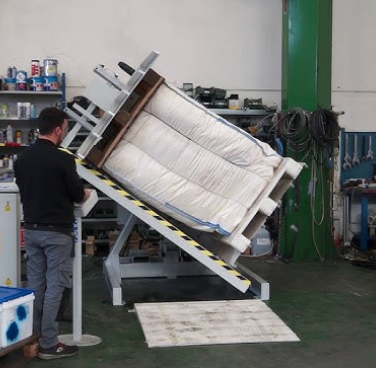
A Systematic Approach to Selection
From my experience helping clients find the perfect fit, I have developed a simple but effective process. It is about asking the right questions before you ever look at a single machine. Let's walk through the critical decision points.
1. What Are You Handling? (Product Characteristics)
The nature of your product is the most important factor. A machine that is perfect for stable, boxed goods could destroy a load of fragile vials or crush bags of powder.
- Robust, Stable Loads: If you are handling things like cans, bottles, or sturdy, well-wrapped boxes, a Pallet Inverter that clamps the load from the top and bottom and rotates it 180 degrees is an excellent, fast, and reliable choice. A simple Pallet Pusher system, which slides the load from one pallet to another, can also be very effective and is often more compact.
- Fragile or Unstable Loads: For products that cannot be tilted or squeezed, like open-top containers, pails of liquid, or delicate electronics, a Load Tipper or a Side-Clamping Pallet Changer is necessary. These machines gently tilt the load 90-95 degrees or clamp it from the sides, allowing the pallet to be exchanged without putting vertical pressure on the product itself.
- Bags and Sacks: For products in bags or sacks that might shift, a system with side walls and gentle clamping is crucial to keep the load intact during the transfer.
2. How Fast Do You Need to Go? (Throughput)
Your required speed will determine the necessary level of automation.
- Low Volume (1-10 pallets/hour): A simple, standalone, operator-controlled machine is perfectly adequate and cost-effective.
- Medium Volume (10-30 pallets/hour): You might consider a semi-automated system with features like automatic pallet stacking and destacking to speed up the cycle.
- High Volume (30+ pallets/hour): For a busy distribution center or a 24/7 manufacturing plant, a fully automated, inline system is the only option. These can be integrated directly into your conveyor lines, requiring no operator at all.
3. Where Will It Go? (Space and Layout)
Factory floor space is always valuable. You need a machine that fits your available area.
- Inline Systems: These are integrated directly into your production or packaging line, offering the highest efficiency but requiring more planning and space.
- Standalone Systems: These are more flexible. You can place them in a corner of the warehouse or at the loading dock, and they are serviced by forklifts. This is a common choice for retrofitting into existing facilities.
- Pit-Mounted vs. Floor-Mounted: Some machines require a pit in the floor for ground-level loading, which can be great for hand-pallet-truck access. Others are loaded at a raised height by a forklift.
Matching Machine Type to Your Needs
This table gives a simple overview to help guide your initial thinking.
| Machine Type | Best For | Key Feature | Speed |
|---|---|---|---|
| Pallet Inverter | Sturdy, boxed, or frozen goods. Cans, bottles. | Rotates load 180° for fast exchange. | High |
| Pallet Pusher | Stable, flat-bottomed loads. | Pushes the load from one pallet to the next. | Medium to High |
| Side Clamping Changer | Fragile goods, vials, open-top boxes, heavy loads. | Clamps the load securely from the sides. | Medium |
| Load Tipper | Unstable loads, pails, or pressure-sensitive items. | Tilts the load ~95° to slide the pallet out. | Low to Medium |
Choosing the right partner is as important as choosing the right machine. A good supplier will act as a consultant, helping you analyze these factors to engineer a solution that truly solves your problem.
My Insights
As someone who built a factory from the ground up, I know that every decision about machinery is critical. You are not just buying steel and motors; you are investing in the future of your business. I see so many factory owners, men and women like Javier Morales, who are brilliant at what they do. They navigate volatile markets, manage huge teams, and produce essential goods. But they are constantly under pressure from rising costs, aging equipment, and new regulations like these Brexit pallet rules.
These challenges are not just entries in an accounting ledger. They are real threats to the efficiency, profitability, and even the survival of the business you have worked so hard to build. And I have learned that the best way to fight these threats is not by cutting corners, but by making smart, strategic investments in automation.
A machine like an automated pallet exchanger is a perfect example of this philosophy. On the surface, it solves a simple compliance problem. But its real value is much deeper. It is a direct response to some of the biggest challenges a modern factory owner faces. It reduces your dependence on manual labor, which is often unreliable and expensive. It dramatically improves workplace safety, protecting your people and your company from the high cost of accidents. It creates a predictable, consistent, and fast process, which is the foundation of any efficient operation.
For a forward-thinking leader like Javier, who is already implementing smart platforms and looking for strategic partners, a piece of equipment must do more than just its basic job. It must be a step towards the future. An automated pallet exchanger is not just about meeting today's ISPM 15 rules. It is about building a more resilient, digital-ready, and efficient operation that is prepared for the challenges of tomorrow. It is an investment in stability. It is an investment in growth. And from one factory owner to another, I can tell you that those are the best investments you can make.
Conclusion
Automating your pallet exchange is not just about Brexit compliance. It is a strategic investment in operational efficiency, workplace safety, and the long-term, profitable growth of your business.


